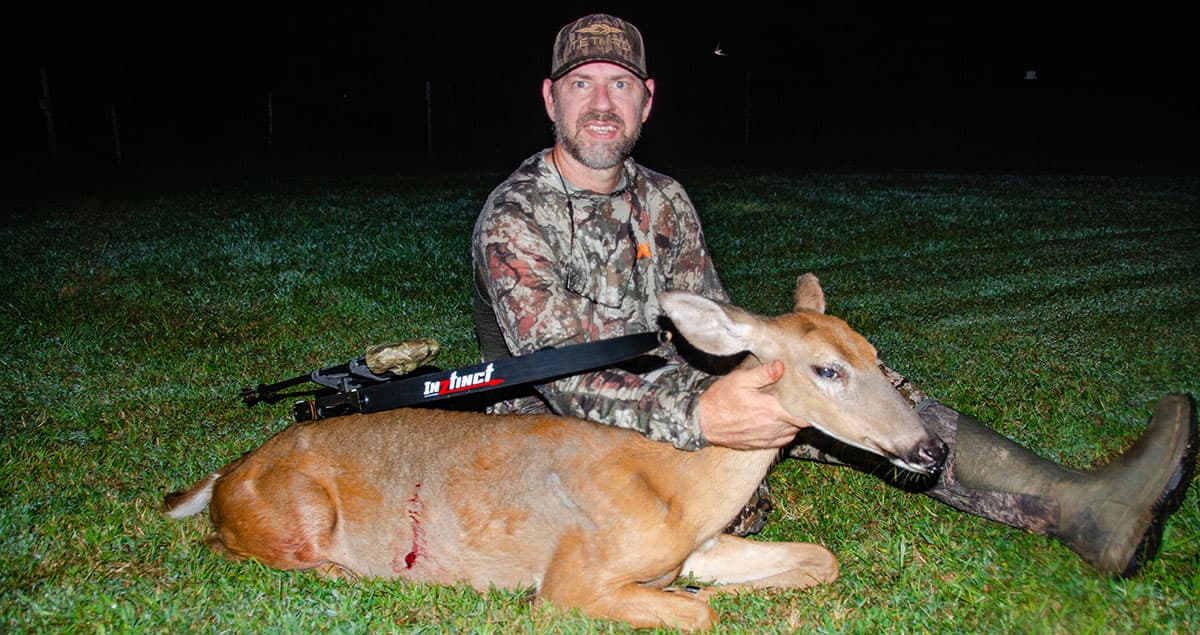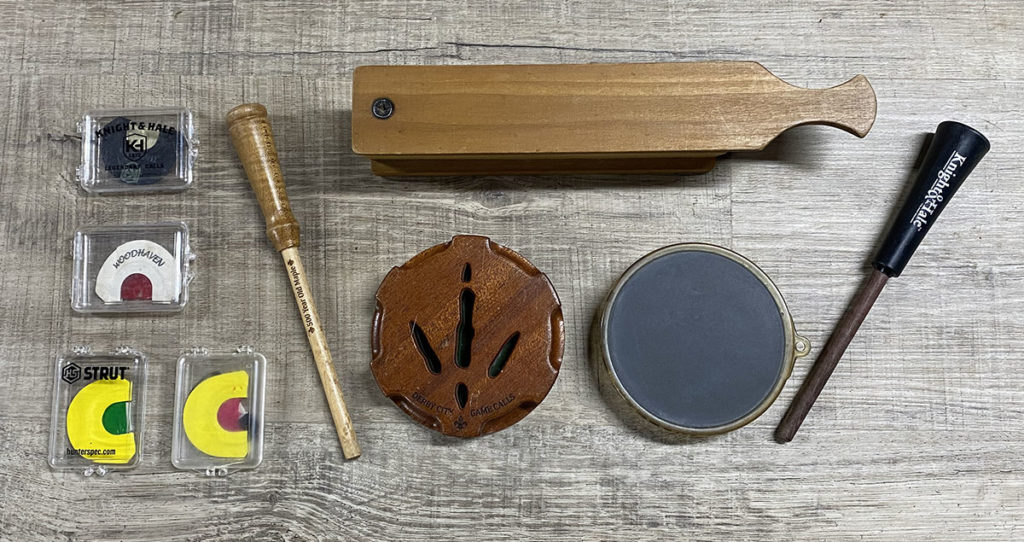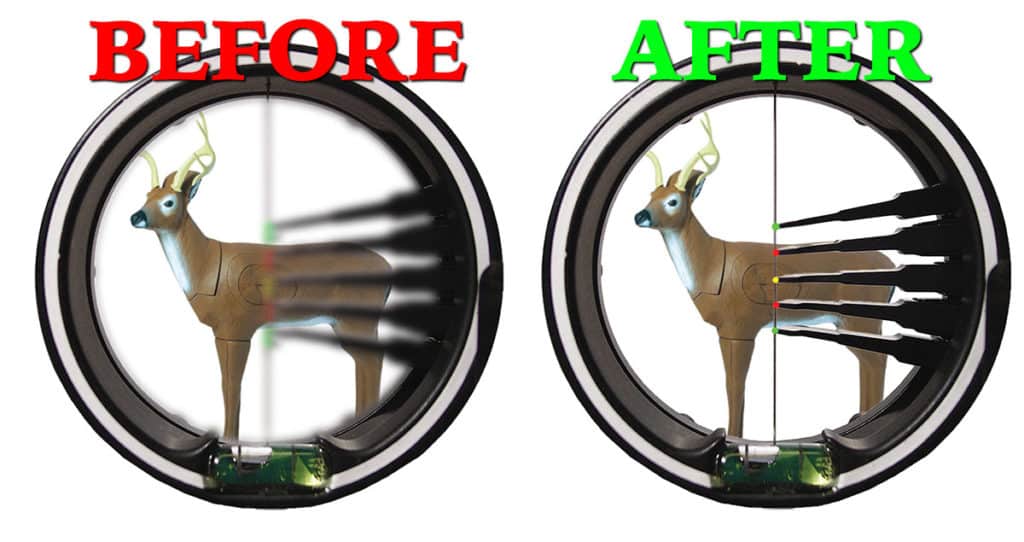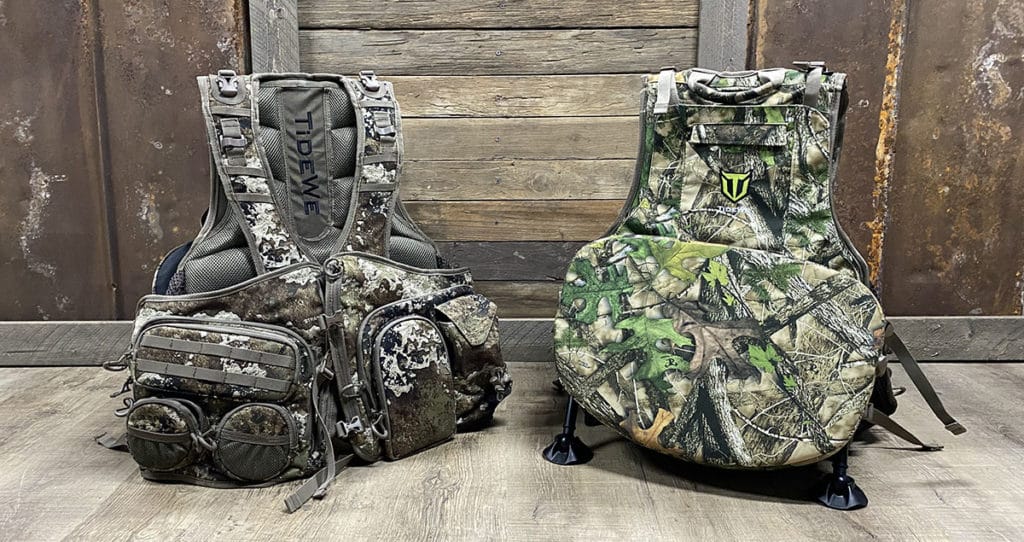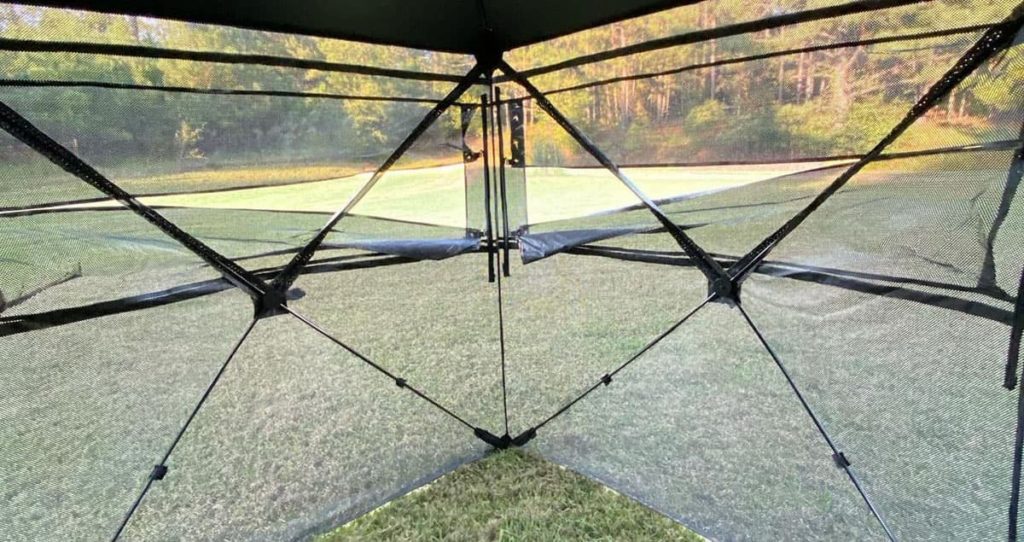The best recurve bow for a new traditional archer is one that is well constructed, draws and shoots smoothly, and is affordable. While I’m a firm believer that you get what you pay for, I don’t recommend dropping hundreds of dollars on your first recurve until you know it’s something you’re going to stick with.
At the same time, you don’t want to start with junk. A poor performing bow will leave you frustrated and wanting to move on to a different, more satisfying hobby.
To avoid those pitfalls, I’ve picked three great, inexpensive recurve bow options for someone new to the world of traditional archery. All three have excellent reputations for being good-shooting bows, and they can all be bought for well under $200.
Samick Sage
The Samick Sage is one of the most popular recurve bows for beginners and was my fist choice when I first decided to give traditional archery a try.
[affiliatable id=’204684′]
Specifications:
- Draw weights: 25 lbs to 60 lbs
- Brace height: 7.5 to 8.25 inches
- AMO length: 62 inches
- Riser: Hard maple laminations
- Limbs: Fiberglass and hard maple
What I Like About the Samick Sage
With its 62″ length and brace height of 7.5”-8.25”, the Samick Sage offers adequate forgiveness to aid new archers in developing proper form and technique.
The removable limbs have a standard weight range between 25 to 60 lbs, allowing you to increase the draw weight as your strength develops over time.
Weighing just 3.4 lbs, the Sage has a comfortable, ergonomic grip and slim profile for easy handling.The riser includes pre-installed brass bushings that allow for the addition of a quiver, sights, and a stabilizer.
What I Don’t Like
If your draw length is over 28 inches like mine, you’ll likely have issues with stacking. If you’re not familiar with the term, stacking is when the bow starts getting exponentially harder to draw after you’ve exceeded the optimal draw length.
While I am still able to shoot the the Sage at my longer draw length, it feels like I’m shooting a bow much heavier than the advertised 40lb pull — and I am to some extent.
The one other issue I’ve had with the Samick bow is the threaded bushings for the quiver eventually pulled out after two years of use. Not a big deal, as I simply glued them back in place, but it’s just a small quality control issue that can result from an inexpensive bow mass produced overseas.
For the price, the Samick Sage recurve bow still provides an excellent value as a starter bow.
TideWe Recurve
TideWe offers an affordable recurve bow package perfect for new archers wanting everything they need to get started shooting.
[affiliatable id=’204686′]
Specifications:
- Draw weights: 20 lbs to 55 lbs
- Brace height: 7.5 to 8.5 inches
- AMO length: 62 inches
- Riser: Laminated hardwood
- Limbs: Maple lamination with fiberglass
What We Like About the TideWe Recurve
The TideWe bow has a very similar look and design as the Samick Sage, but with a slimmer, less beefy riser. That smaller profile provides a comfortable grip and results in a bow that weighs a pound less than the Sage.
Like the Samick, the 62” length and generous brace height make it a smooth shooting and forgiving bow.
Limb options for the TideWe range from 20-50 pounds in increments of 5.
Where the TideWe stands out among the three options discussed here is all the accessories that are included. The TideWe is the only one where you get everything you need to start shooting: the bow, arrows, rest, sights, a stringer, and even some paper targets to practice with.
All for under $100 (at the time of this writing).
What We Don’t Like
I’ve only had the TideWe for a few months now, and I haven’t found much to complain about at this point. I quickly ditched the arrows, rest, and site that came with the bow, as they aren’t really up to the task of deer hunting. But they’d be fine just to learn the ropes of shooting a recurve.
One other issue I’ve had is that the quiver pushing are starting to pull out just like the Samick Sage did. I don’t know why these bows have such an issue in this area, but I’m certain some good epoxy will take care of the issue.
So if you’re on a tight budget, and want to buy everything you need in a single package, the TideWe recurve bow will be hard to beat.
Black Hunter
In recent years, the Black Hunter has quickly become a popular budget option for new recurve bowhunters. Probably due to its striking black finish that gives it an eye-catching appearance unmatched by many recurves in its class.
[affiliatable id=’204687′]
Specifications:
- Draw weights: 25 lbs to 60 lbs
- Brace height: 7.5 to 8 inches
- AMO length: 60 inches
- Riser: All-black hardwood
- Limbs: Black fiberglass
- Right and Left hand
What We Like About the Black Hunter
The riser is made of a durable hardwood and the limbs are a composite of bamboo and fiberglass for power and durability.
The Black Hunter is the shortest of the three options at 60 inches, but still provides a smooth draw and forgiving shot due in part to its 7.5 to 8 inch brace height. In addition to being smooth, it also seems to pack the most punch of the bows on our list.
Buying a Black Hunter recurve can be a little confusing due to a wide variety of brands seemingly offering the same bow. We’ve linked to the one we feel is the best legitimate option.
While the Black Hunter is the one option discussed here I haven’t personally hunted with, some well respected traditional archers who I trust and respect have told me it’s the best recurve bow you can buy for the money. And because of that, the Black Hunter will likely be my next trad bow.
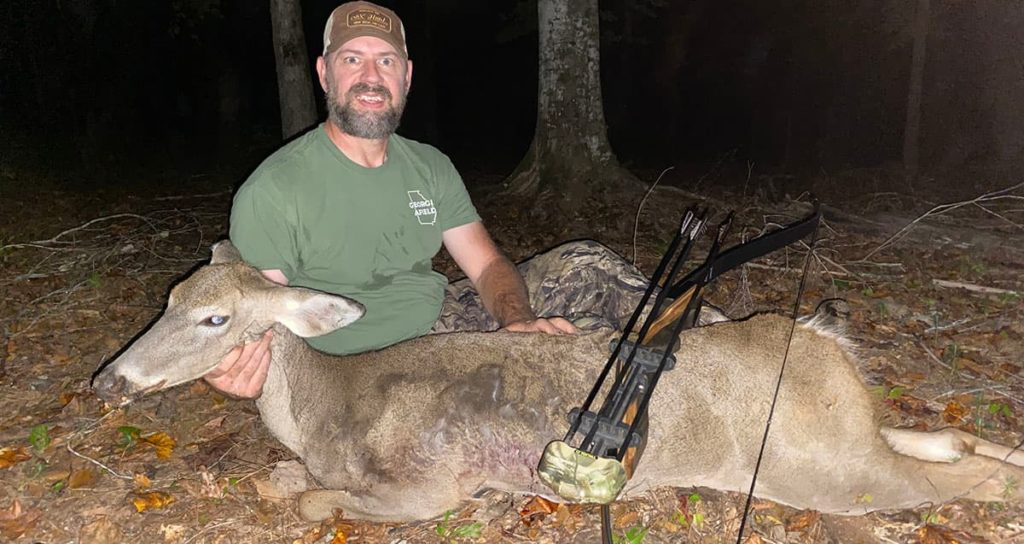
4 Updates You’ll Want to Make
Regardless of which of these three bows you ultimately choose, there are a few things you’ll want to add to have it shooting as good as possible.
New String
All three bows will benefit greatly from a new Flemish fastflight string. The Dacron string that comes on them will work, but the fastflight string will give you more speed and less noise to contend with.
When paired with some beaver balls discussed below, you’ll have a nice, quiet-shooting recurve ready for its first deer hunt!
Fur Arrow Rest
While you can add a variety of rests to any of these bows, I like the simplicity of shooting right off the shelf. To protect your bow and your arrows, pick up an inexpensive fur pad for the shelf and a fur or plastic pad for the side of the riser that your arrow will set against.
Beaver Balls
Mountain Man Beaver Balls are lightweight, long lasting, tanned beaver hide string silencers for your recurve. They are fairly easy to install, and will definitely reduce the string noise of your bow.
Arrows With Feather Fletchings
Only the TideWe bow comes with arrows, so you’ll need to pick up some if you go with the Samick Sage or Black Hunter. However, even if you go with the TideWe, I’d recommend replacing the included arrows with the ones linked below on Amazon.
I say that because the included TideWe arrows have plastic fletchings that are no ideal for shooting off the shelf of your bow. They will hit the riser of the bow and cause the arrow to kick out as it leaves the bow.
To remedy this, you’ll want some arrows with more forgiving feather fletchings. There are plenty of options out there from all the major arrow manufacturers, but I’ve been very happy with these inexpensive carbon arrows from Amazon.
I’ve been using them for a few years now with no issues whatsoever. I even killed my first traditional archery deer – a big doe – using these arrows. If you add a 150-grain broadhead to the full length arrows, you’ll have a great 570-grain arrow setup.
Recurve Bow Buyer’s Guide
Purchasing your first recurve bow can be an exciting yet daunting task. With so many options on the market, it’s important to understand the key features to look for so you can select the right bow for your needs and skill level.
Here are the most important factors to consider when choosing a recurve bow as a beginner:
Draw Weight
The draw weight refers to the amount of force required to pull the bow string back to your anchor point. For beginners, it’s best to start with a lower draw weight between 20-35 lbs. This allows you to focus on proper form and technique rather than struggling with a heavy draw.
Don’t underestimate the importance of starting with the right draw weight. I don’t care if you’ve been shooting 70 pound compound bows for years, shooting a recurve is not the same. There is no letoff on a recurve, and the further you draw back, the harder it gets.
For reference, I shoot my compound bow at 65 pounds, but have a 40-pound Samick Sage. I’m probably pulling more like 45+ by the time I get it back to my 30-inch draw length, but it’s still significantly lighter than my compound.
As you build strength and stamina, you can gradually increase the draw weight. Take your time incrementally working up in 5 lb intervals as opposed to jumping right to a 50 lb bow, which can lead to frustration, poor form, and even injury.
Riser
The riser is the central part of the recurve bow that the limbs attach to. For beginners, a one-piece wooden or aluminum riser is recommended for their durability and affordability.
The grip of the riser should fit comfortably in your hand. An improperly sized grip can torque the bow and impair accuracy.
Limbs
The limbs give the bow its power by bending and storing energy to propel the arrow forward. For new archers, fiberglass or wood limbs are ideal because they offer smooth performance at an affordable price.
Overall Length
The overall length refers to the bow’s total length from limb tip to limb tip. For beginners, a longer overall length (58 inches or more) is preferable because it offers added stability and forgiveness. Shorter bows look sleek but are harder to shoot consistently.
If your draw length is over 29 inches, you may want to consider a longer length bow as well. A longer bow disperses the drawing force over a greater length, which results in smoother drawing and less “stacking” — the exponential increase in draw weight as the bow is pulled back. This makes it easier for the archer to maintain a consistent and stable shooting form.
The extra length also provides a greater “radius of curvature,” which helps in reducing the finger pinch that can occur at full draw. Moreover, a longer bow generally provides a more forgiving and stable platform, making it easier to control during aiming and upon release. All these factors combine to provide an archer with a long draw length a more accurate and comfortable shooting experience.
Price
While recurve bows can vary from less than $100 to well over $1,000, there are some great beginner options at the lower end of that spectrum.
The Samick Sage, TideWe, and Black Hunter recurve bows are all excellent entry level options under $150 for beginners looking to experience the joy of traditional archery. Any of these quality bows will provide a solid foundation to grow your skills.

